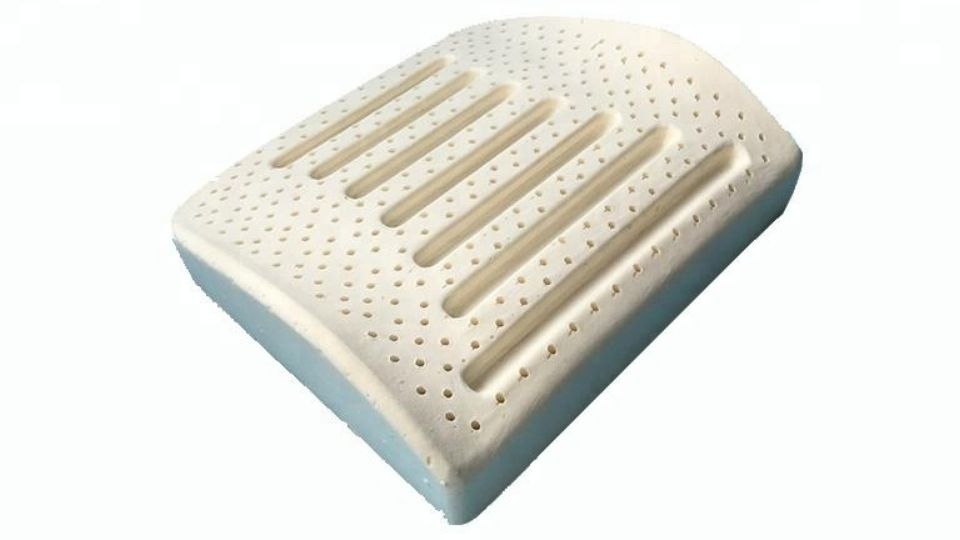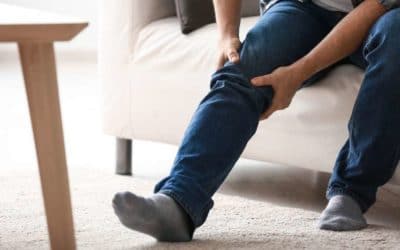Can a Bad Chair Cause Lower Back Pain?
Our bodies are not built for our modern ‘sedentary’ lifestyles. Many of us now sit in an office all day for work, and our office chairs aren’t usually very supportive. So how do you know if your chair is not suitable for you? What type of chair is best?
As a general rule, chairs that are poorly designed can cause back pain in most cases. When you sit in an uncomfortable chair, you tend to hunch forward, stretching and straining ligaments and discs, which can result in back pain.
As an ergonomic adviser, chiropractor, and designer, there are things I have learned about how to find the right office chair. Presented here are some research-based sitting methods that can relieve your discomfort when seated.
Sitting Causes Low Back Pain
Sitting for too long in a chair that does not provide adequate support for the spine can cause or exacerbate lower back pain. The reason for this is the lumbosacral discs at the base of the spine are loaded three times more than when you’re sitting. By sitting on an unsuitable chair, you’re more likely to misalign your spine and cause a mechanical core muscle imbalance, which in turn may result in back pain. Poor posture also stresses the joints and tissues of your back.
All Day Comfort & Support
Those who sit for a long time in a lousy chair may experience a lot of back pain when they stand up since their back muscles are insufficient to support them. Consequently, they suffer from pain due to spending hours at their desk since they don’t take breaks for sitting still. In this process, sciatic nerves, soft tissues, joints, and discs end up under a lot of strain.
To make matters worse, we sit for long periods on our commutes, at home watching television, when we eat, etc. This sedentary behaviour can contribute to habitual poor posture such as hunching or slouching.
Low Back Pain: 4 Critical Seating Adjustments
Get the Seat Height Right
Getting your seat height right so that your hips and low back get the most healthy position for sitting is, in my opinion, the best adjustment you can make for improved comfort. The height adjustment is the primary determinant of the angle in your hip joint during sitting, which impacts the position of your pelvis and the degree of curvature in your lower back, changing your spine’s normal alignment. And the height of your chair also affects your back muscles which play a role in posture-related back discomfort.
Black Friday: 35% Off Today
Typical Delivery 1-3 Days
If you are into super easy and inexpensive alternatives to office chairs, I wrote a fantastic article on how and why you should consider these options for back pain and I encourage you to read it!
Remember, sitting is the worst thing for your back. Furthermore, we spend so much time sitting that we would like to avoid any potential problems. So ensure you adjust your seat height correctly.
You need to establish a hip position that is comfortable and functional when you adjust the chair. Many office workers are not interested in fiddling with the controls positioned at the chair seat base. Nonetheless, they are there for a reason. Understanding how to adjust your chair may reference other workstation improvements you may need to make. Saying that here’s all you need to know:
- Start with feet flat on the ground with legs a should width distance apart.
- A gas shock control is the simplest method to adjust seat elevation. A typical office chair seat height ranges from 40 to 60cm off the floor.
- If this range is not an option for you, you can easily find the right gas shock based on your height and weight. All you will need is a rubber mallet to tap the chair’s base and seat pan to extract your new gas shock.
- As you sit down, raise your seat as high as possible, ensuring that both feet are firmly planted on the floor.
Once the height has been adjusted to fit your frame, you can adjust the seat depth.
Adjust Your Seat Depth
The seat depth adjustment is probably one of the most important features in terms of comfort because the right seat depth allows you to access support from the chair back without cutting off circulation at your knees.
The seat depth measurement lets you know how far forward you are, creating optimal comfort and support for your body. With a chair that supports you correctly, you don’t have to work as hard to stay upright.
All Day Comfort & Support
Key features of a good seat depth:
- If the seat pan is too far forward, it may put undue pressure on the backs of your knees.
- If the seat pan is too far back, it may put undue pressure on your low back and gluteal muscles.
- Try to position the seat so it ends a 2-3 fingers distance from the edge of your seat to the back of your knees.
- When you purchase your chair, look for a waterfall chair at the edge that will help relieve pressure on your legs.
Now that you have your seat height and depths et right for you, the third most comfortable adjustment that you can make is to get a forward tilt angle on your seat.
Forward Tilt
A good chair for prolonged sitting should allow for forward tilt adjustment. This can help to correct the natural slouching position that the body assumes when sitting for long periods. The hips should be higher than the knees when sitting, with some standards recommending up to 20° of forward tilt. This allows for adjustability in the seat angle of the chair and can reduce stress on the back, and improve posture and blood circulation in the legs and feet.
A forward seat tilt positions the pelvis in a more neutral position and distributes weight into the core muscles, taking the load off the spine. This encourages an active posture throughout the day. If your chair does not have this feature, consider using an ergonomic seat wedge with a thicker part towards the back of the chair.
Black Friday: 35% Off Today
Typical Delivery 1-3 Days
Get Proper Lumbar Support
Our spine is relatively straight when viewed from the front, but our spine curves inward toward our abdomen. This curve is known as the lordotic curve. It is essential to provide support to this area of the back. I was surprised how similar cheap memory foam seat cushions with FAKE REVIEWS were on Aliexpress from the listing on Amazon! Lumbar support makes it easier for the body to maintain good posture by filling the gap between the curve of the spine and the seat.
When sitting for long periods, it is important to have proper support for the lower back. This can help to relieve pressure on the muscles and spine and prevent discomfort and pain. Having lumbar support in your chair can help to maintain the natural curvature of the spine and reduce muscle tension. Additionally, when the support is not provided by the chair, it may be helpful to strengthen the muscles in the lower back to help maintain proper posture and prevent forward lean.
Upgrade your chair if it doesn’t provide adequate lumbar support. In the meantime, you might try a rolled-up towel or small cushion.
What is the Best Seat Cushion for Low Back Pain?

As a chiropractor, I have seen firsthand how difficult low back pain can be. I tried different seat cushions in an effort to find one that would provide comfort and support for my patients, but I never found the perfect solution. Eventually, I decided to design my own seat cushion, and after many prototypes and tests, I finally arrived at a design that worked well. The cushion is made of high-density natural latex foam and contoured to provide support for the lower back. It has quickly become a popular choice for anyone who suffers from low back pain. The cushion provides the support and comfort that people need to get through their day with ease.
When it comes to seat cushions, there are many options available. However, I wanted to create an orthopedic seat cushion that would provide more support and comfort than the others. After months of testing different prototypes, I finally designed a cushion that met all my criteria.
My seat cushion is made from natural latex and has a higher density which helps to keep the spine in alignment. Additionally, it has a 4-way stretch vegan leather for durability and comfort. I have found that this cushion has helped many of my patients find relief from back pain and I believe it can help others as well.
I explain the concept of my design on a TV show HERE
Final Thoughts
The truth is that low back pain can have a variety of causes. Thankfully, many of them can be prevented or remedied.
Make this easy lifestyle and work changes, and you will be pain-free all day and all night. Below are some tips to remember.
- Get your chair right height, seat depth, forward tilt, and lumbar support.
- Be active and schedule exercises into your workday that can relax and strengthen your low back muscles.
- Maintain proper posture while working; however, take small breaks as often as possible.
- Make sure you get enough quality sleep every day by maintaining good sleeping habits.
Sources
- Greene, R.D., Frey, M., Attarsharghi, S., Snow, J.C., Barrett, M. and De Carvalho, D., 2019. Transient perceived back pain induced by prolonged sitting in a backless office chair: are biomechanical factors involved?. Ergonomics, 62(11), pp.1415-1425.
- Zemp, R., Taylor, W.R. and Lorenzetti, S., 2015. Are pressure measurements effective in the assessment of office chair comfort/discomfort? A review. Applied Ergonomics, 48, pp.273-282.
- De Carvalho, D., Grondin, D. and Callaghan, J., 2017. The impact of office chair features on lumbar lordosis, intervertebral joint and sacral tilt angles: a radiographic assessment. Ergonomics, 60(10), pp.1393-1404.
- Lengsfeld, M., Frank, A., Van Deursen, D.L. and Griss, P., 2000. Lumbar spine curvature during office chair sitting. Medical engineering & physics, 22(9), pp.665-669. (lumbar)











